Ticks live worldwide, and there are hundreds of different species. But, when it comes to ticks in Indiana, there are only about 15 species of tick. Of those, only four are common, and only one of those four is a known vector for Lyme disease. Ticks can pass on other illnesses too, like Rocky Mountain spotted fever, so it’s important to know a little about avoiding their bites.
Here, we’ll learn about the four most common ticks in Indiana. Then, we’ll go over the best times of year for avoiding these ticks and which species you need to watch out for. We’ll explore exactly where ticks in Indiana live and the steps you can take to avoid a nasty bite.
1. American Dog Tick (Dermacentor variabilis)
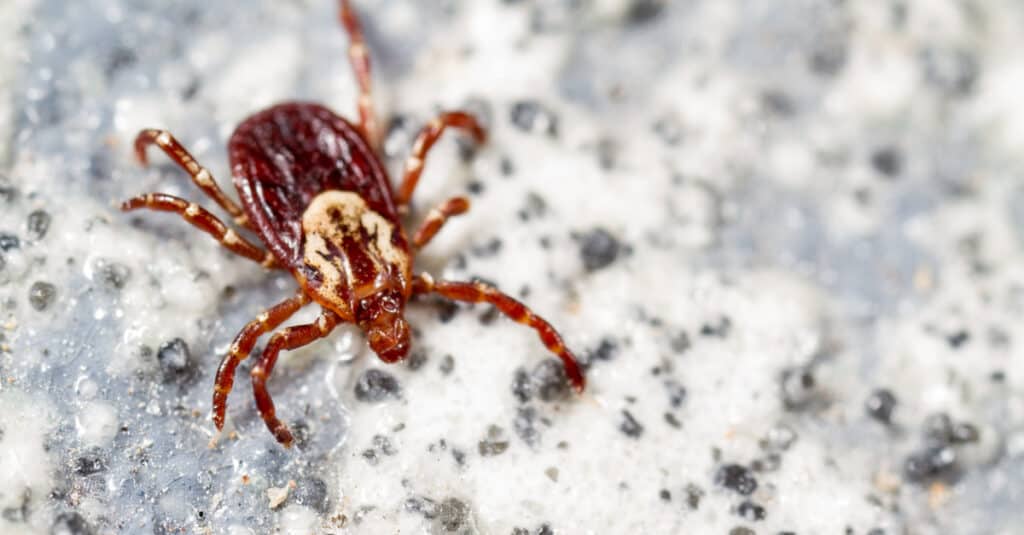
There are two types of dog tick in the United States; the American dog tick and the brown dog tick.
©Elliotte Rusty Harold/Shutterstock.com
American dog ticks are one of the four most common ticks in Indiana. They live across the United States in grassy fields and open plains. Unlike other common tick species, American dog ticks don’t inhabit woodlands. Instead, they hang out on the tips of blades of grass. There, they hold out their foremost legs and wait for a host to brush by, at which point they latch on and find a good place to feed. This behavior is called questing.
American dog ticks are red-brown to dark brown. They have eight legs and small heads. Females have a white patch just behind their heads, while males have mottled coloring along their backs. In their lifetime, these ticks will take three hosts, one for each life stage.
2. Lone Star Tick (Amblyomma americanum)
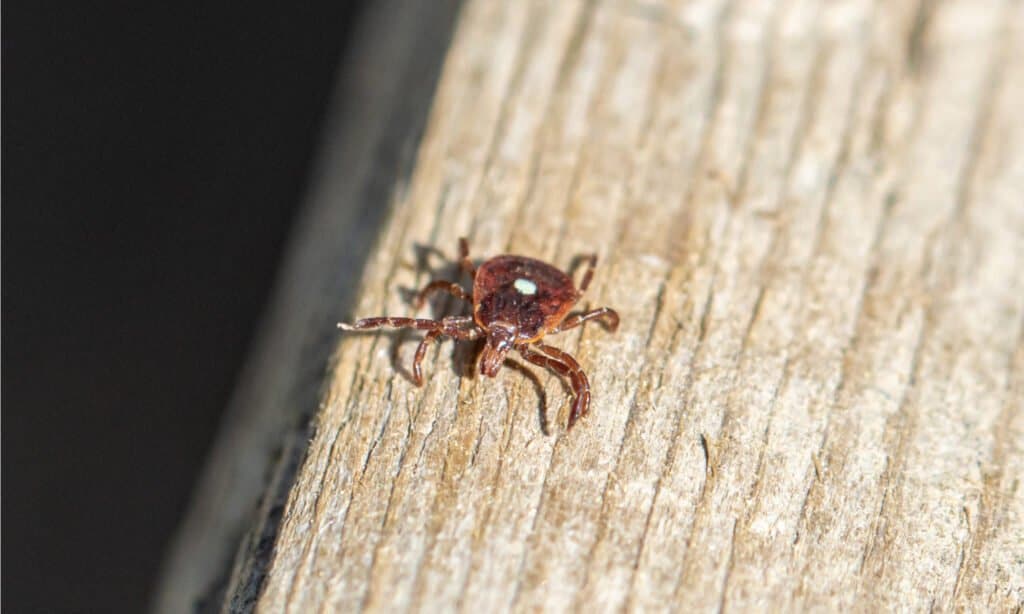
The lone star tick is the second most common tick found on people.
©Maria T Hoffman/Shutterstock.com
Lone star ticks are one of the most common ticks in Indiana. They’re particularly prevalent in southern Indiana, where they live primarily in wooded areas close to water. These ticks are most active in the spring and summer months and can bite humans at any stage in their development. Like other hard-bodied ticks, lone star ticks take one host per life stage, making them a three-host tick.
Female lone star ticks are easy to identify; they have round, light brown bodies and a single white or tan spot in the center of their back. They have eight legs and a visible head. When attached, these ticks in Indiana engorge to many times their original size, and their bodies turn gray. Nymphal lone star ticks are no bigger than the head of a pin and greatly resemble a sesame seed. But, don’t let their small size fool you; they can still bite and spread diseases and pathogens.
3. Deer Tick (Ixodes scapularis)
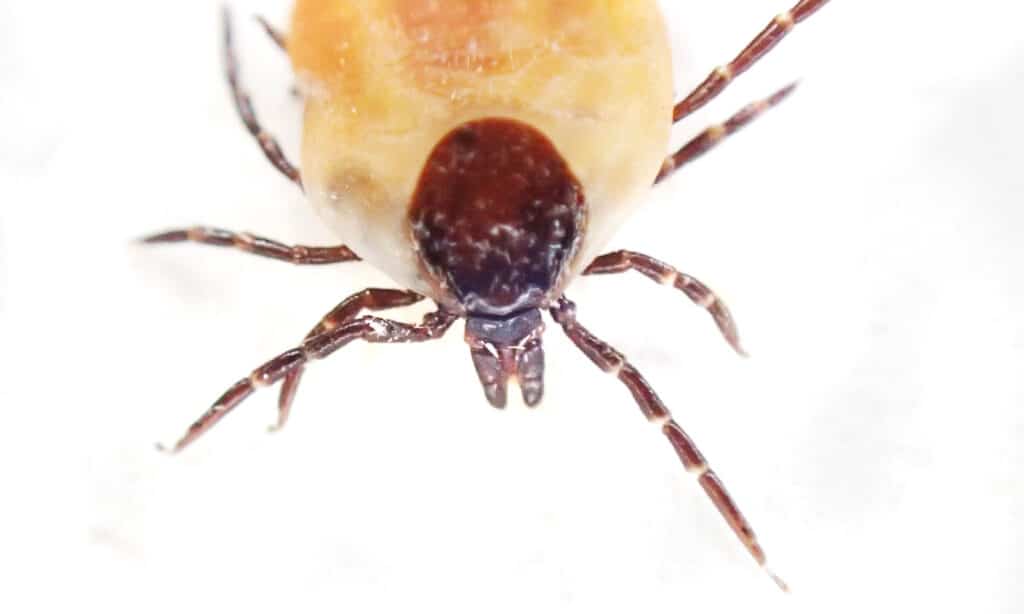
Though they’re extremely common today, deer ticks weren’t recorded in Indiana until 1987.
©iStock.com/jonnysek
Deer ticks are some of the most common ticks in Indiana. They have red-brown bodies and black legs. They’re the only prevalent species of tick with black legs, which is why they’re also known as black-legged ticks. They’re smaller than other species of hard-bodied tick, like the lone star tick, and have oval-shaped bodies. Additionally, deer ticks have black to dark brown scuta (the hard shields over their shoulders) and visible heads.
Deer ticks inhabit forested areas and stick to the leafy debris on the forest floor. As larvae and nymphs, they feed mostly on small to medium-sized animals, like mice and rabbits. Adult deer ticks in Indiana prefer sucking the blood of white-tailed deer and, to a lesser extent, cats and dogs. However, they will bite any humans that make themselves available.
4. Brown Dog Tick (Rhipicephalus sanguineus)
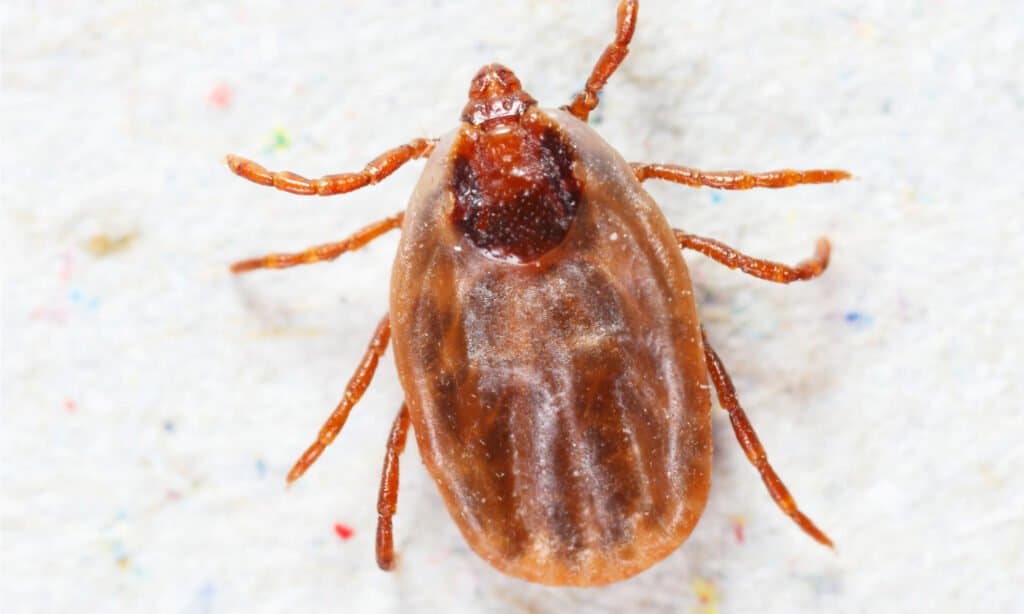
Brown dog ticks almost always live in or near man-made dwellings.
©7th Son Studio/Shutterstock.com
Brown dog ticks may be the most frustrating of all ticks in Indiana—for dog owners. These ticks feed almost exclusively on canines, though they occasionally bite cats or humans. They have narrow, almost rectangular, red-brown bodies with small heads. Brown dog ticks live mainly indoors, in crates, kennels, or dog beds. Unlike other types of ticks, they don’t live outdoors.
It’s important to provide your canine with preventative flea and tick treatment to avoid brown dog tick bites. These nasty little visitors can spread both dog-specific diseases, and Rocky Mountain spotted fever.
When Is Tick Season In Indiana?
Ticks in Indiana are most active in the spring and early summer, then again in the fall. They’re least active during the cold winter months and at the hottest part of the summer.
Do Ticks In Indiana Have Lyme Disease?

Ticks in Indiana carry Lyme disease, which can quickly turn into a debilitating, chronic illness if left untreated.
©iStock.com/Ladislav Kubeš
Unfortunately, yes. There is one type of tick in Indiana that spreads Lyme disease, and that’s the deer tick. Deer ticks are what are known as ‘vectors’ for Lyme disease. This means that they simply carry the bacteria, but when they bite humans, they can spread the bacterial infection to them.
Where Do Ticks Live In Indiana?
Ticks in Indiana are most common in the leafy detritus on forest floors and in grasslands. They usually quest either on grass blades or within the leafy debris on the ground. Brown dog ticks are most common in areas where dogs are frequent, like kennels, veterinary offices, and homes with dogs in them.
How to Avoid Ticks in Indiana
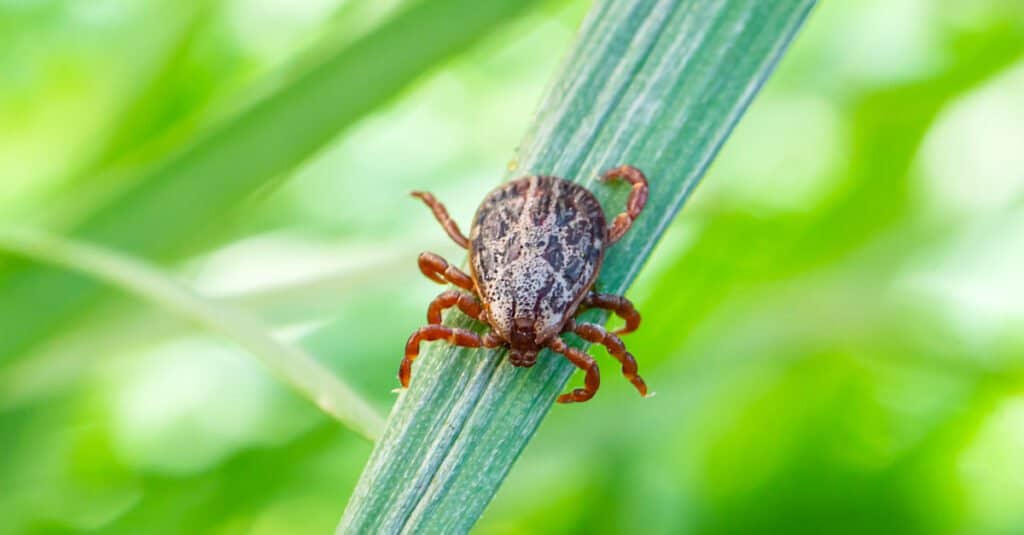
Ticks may be a nuisance, but they’re easier to avoid than the United States’ other problem vector, the mosquito.
©iStock.com/Diy13
The first step to avoiding ticks in Indiana is education. Learn about the different kinds of ticks. Then, be sure to wear long-sleeved pants and long-sleeved shirts when going out during tick season. Finally, be sure to check yourself for ticks after any outdoor activity.
The photo featured at the top of this post is © KPixMining/Shutterstock.com
Thank you for reading! Have some feedback for us? Contact the AZ Animals editorial team.






